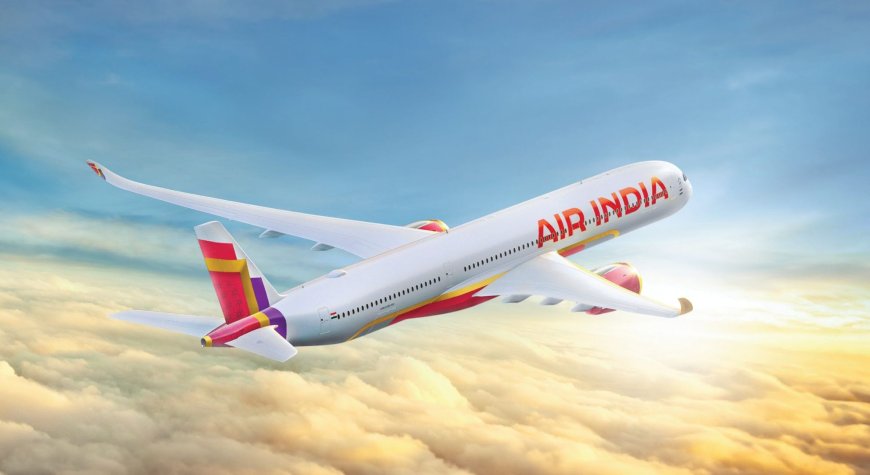Air India’s new A350 takes to the skies on Jan 22; what is new about it?

AIR India became the first operator in India to induct the A350 in its fleet when the first plane landed in India in the last week of December 2023.
Starting January 22, 2024, the airline will deploy the aircraft for commercial operations in domestic sectors. The aircraft is part of an order of 40 A350s, equally split between the -900 and -1000.
The airline is currently operating test flights without revenue passengers and the aircraft has made landings at Ahmedabad, Jaipur and Nagpur, apart from its base New Delhi. When it starts revenue operations, it will be based at Bengaluru. From January 18 onwards, the A350 is on static display at Wings India, Hyderabad.
As it gears up for the commercial induction, avgeeks are thronging the booking engines and looking for good deals to experience India’s first A350. At Least two other airlines operate in the same configuration - Aeroflot and Turkish. This is so because Air India’s first six A350-900 were initially destined for Aeroflot - the Russian carrier.
After the delivery of seven out of 22 aircraft, the Russia - Ukraine war led to sanctions against Russia as a result of which all deliveries were stopped. Turkish took six, while Air India is getting another six. These were the aircraft that were either ready or nearly ready.
While Air India is deploying the aircraft in a three-class configuration, Turkish Airlines sells the premium economy as economy class and continues with a two-class configuration. Lufthansa too has multiple A350s which were destined for Philippines Airlines, SAA and Latam Brazil.
Air India’s A350-900 aircraft comes in a three-class cabin configuration with 316 seats designed by Collins Aerospace: 28 private Business Class suites with full-flat beds, 24 Premium Economy seats with extra legroom and multiple other differentiating features, and 264 spacious Economy Class seats.
The business class cabin comes in seven rows of four abreast seats comprising a 1-2-1 configuration. The business-class suites offer doors for more privacy and all seats come with direct aisle access.
The single seats come staggered for more privacy. It also has a self-serve refreshment area. While Air India may not choose to put it to use for its current set of domestic flights, this will become a value add for international flights. The business class suites come fitted with 54cm screens. The seats have a blue fabric body with a leather headrest, two side lights, a side table and a shoulder strap for take-off.
Middle seats have a sliding screen to allow privacy or a window to the passenger in the next seat. The tray table pops out from below the screen and can be extended forward or pushed away. The seat can be reclined to fully flat using buttons. Storage includes a side pocket with a mirror and a water bottle/magazine holder next to the seat.
The premium economy section comprises just three rows of seats, a total of 24 seats which are eight abreast in a 2-4-2 configuration. It has a pitch of 38 inches and a 13-inch screen. The economy will have a standard 3-3-3 configuration and have 264 seats. The IFE screens are smaller at 30 cm. Air India has made small tweaks to the fabric and replaced the Aeroflot logo everywhere.
What separates the A350?
The A350 is the quietest of any twin-aisle aircraft offering a modern in-flight flying experience with reduced noise. The aircraft features the latest aerodynamic design, a carbon fibre fuselage and wings, plus new fuel-efficient Rolls-Royce Trent XWB engines.
Together, these latest technologies result in 25 percent lower operating costs, as well as a 25 percent reduction in fuel burn and CO2 emissions compared with previous-generation competing aircraft. Although airlines like Lufthansa, Virgin Atlantic and Air France have been operating the A350 to India for the last many years, this is the first time that an Indian carrier will operate the aircraft.
This also is the only Airbus widebody in India at the moment, with all other aircraft including the two aircraft wet-leased by IndiGo coming from the Boeing stable.
This is just the beginning of a long transformation for Air India. By March the airline expects one-third of its widebody fleet to have revamped or modernised interiors. The B777s go for refurbishment starting July and the entire exercise of refurbishment will be complete by the end of 2025. In parallel, the airline will continue to add a mix of brand new planes and the older planes which were operated by Etihad and Singapore Airlines.
By 2025, Vistara’s merger with Air India will also be in progress and the fleet mix will only get more interesting in terms of offerings.
